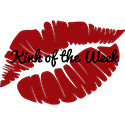I feel like I write about eyes – and eye contact – often. Eyes, as the most changeable facet of one’s facial expression, have the ability to communicate on a level the voice alone cannot. Consent, control, compassion, command, compliance, contrition… The words, in every instance, may be “I will,” but the facial expression – acquiescence, desire, sympathy, authority, obedience, apology – is what conveys the meaning behind them. So when it comes to writing: Eyes are key to unlocking your characters. They open the door and invite readers in to your story.
Beginning Steps
For beginning writers, it is often a challenge to describe people in engaging ways. Often we revert to simplistic descriptors in an effort to tell our readers what we see. The problem with that, is that reverting to fact-sharing as a way of describing characteristics {1} leaves both too much and too little to the imagination, and {2} does not provide for an emotional connection between Reader and Content.
As to {1} — Writing that a person’s eyes are brown opens up a myriad of possibilities while simultaneously being imagination-haltingly simplistic. ‘Brown’ could mean anything from Saskatchewan Cedar to Iowa field mud. It gives readers a fact (in a stats-quote kind of way, a la Literotica stories and Penthouse letters) without any sensual or emotional context. (For more on writing sensual-emotional context, feel free to check out the post I wrote for Eroticon at the beginning of the year.)
Instead of ‘brown’, consider perhaps instead:
- antique oak
- burnt caramel
- chestnut
- creamy latte
- dark cacao
- evergreen bark
- melted chocolate
- newborn fawn
- worn leather
Are those things all technically colors? Not necessarily.
But, as to {2} — They are all things that call a color – as well as a texture or other sensory cue – to mind, and giving your readers sensory cues while simultaneously describing physical characteristics is a good First Step toward engaging your readers.
Moving Into Metaphor
Those of you who are experienced with analogy will recognize that the alt-list of colors I provided above lends itself to creating comparisons. For simplicity’s sake, I will state that a metaphor is a comparison that likens one thing to another by calling it that thing.
Metaphors can be challenging to write, but have the power to add dimension to your descriptions.
EXAMPLES
Description: His eyes were the color of melted chocolate.
Simile: His eyes were like melted chocolate, and in that moment there was nothing else I’d rather have drizzled over me. {Similes generally use ‘like’ or ‘as’ to compare two things.}
Metaphor: His eyes were candy, his gaze warm. Melted chocolate drizzled over my body as he looked me up and down, and I couldn’t help but wonder whether he’d be willing to lick up the mess he’d just made of me.
See how much more can be conveyed by stepping outside of the simple descriptor of ‘brown’?
So Much More
It’s easy (well, not easy-easy in the way of “no practice required,” but easy as in ‘your mind will naturally go there’) to start with color when describing eyes, and – especially for beginners – to move into metaphor using palate comparisons. Food (and drink) is a sensory experience and serves to both awaken appetites and sate them. Eye contact is carnal as well, only the hunger is slightly different.
There is more to eyes – and eye contact – than color though. As I mentioned in the beginning, expressions give context to dialogue; the look in a person’s eyes is one of the key ingredients in that half-baked yet tried-and-true recipe of “It’s not what you say, it’s how you say it.”
But facial expression – as emphasized by the eyes – serves other purposes as well. It can convey attitude, physical/geographical distance, corporeal weight, importance, adherence to social mores, and more. Arched eyebrows (for example) are all well and good, but how are they arched? And why? Is it with an air of superiority or because someone is standing to close and the eyes must refocus? Perhaps it’s because their skin has been stretched too thin or because they are listening intently to the urgency of a child’s unrealistic plea. Maybe those arched brows hover above a disapproving eyeroll when grandma sees that Charlotte has added another piercing to the 13 pieces of studded silver already adorning her face.
Exercises in Unconventionality
Once you feel you have a handle on the basics, and if you feel up to a challenge, try one of the following exercises to write about eyes/eye-contact in an unconventional way:
- Describe the eyes of a person you love in terms of an academic concept you barely grasp.
- Choose an expression (startled*, aghast, mournful, cunning, etc.) and incorporate a household item or an everyday activity in its explanation.**
- Pick a number between one and ten. Utilize that number in scene involving eye contact.
- Borrow a quote from an author or lyricist and twine your words with theirs to convey a character’s expression.
**Example: From the *startled expression on her face when she opened the closet, you’d have thought the family’s hidden skeletons had just tumbled out at her feet.
Now YOU. 🙂
What is it about eyes, or the way they’re written on the page, that draws you in?
Do you have any related writing tips you’d like to share?


This is a great post! I say this as my eyes absorb this like the sparkling blue Mediterranean absorbs salt—fully and completely and being made richer for it. Ok ok, I need practice! But I still love your post!!😜
Collaredmichael recently posted…Something’s Fishy Around Here!
Hahaha! 😛 You definitely get points for trying! 😉
Thank you for reading. 🙂
Every so often, I find myself enjoying a Literotica story but I always skip over the descriptions of how the characters look because it annoys me so badly. Of course she has blonde hair, blue eyes and DDs, but it does nothing for me or the story. Thanks for such a helpful post!
Right?! I mean, OF COURSE she’s 5’8″, 110 lbs. She has to be, or there’s no, y’know, realistic-ness to it. *laugh*
(And I enjoy them now and again too; I just have to be in a patient enough mood to machete my way through the jungle of God-awful in order to do so.) 😉
Thanks for reading. 🙂
I love this post– your spin is a wonderful one.
I’m going to reread it when I can concentrate, and probably about a dozen times after. The eyes have it !
Thanks. 🙂 Happy (re-) reading. 😉